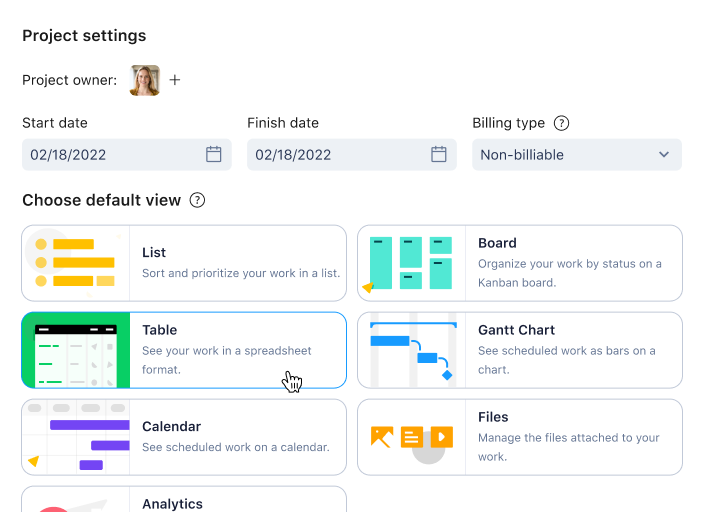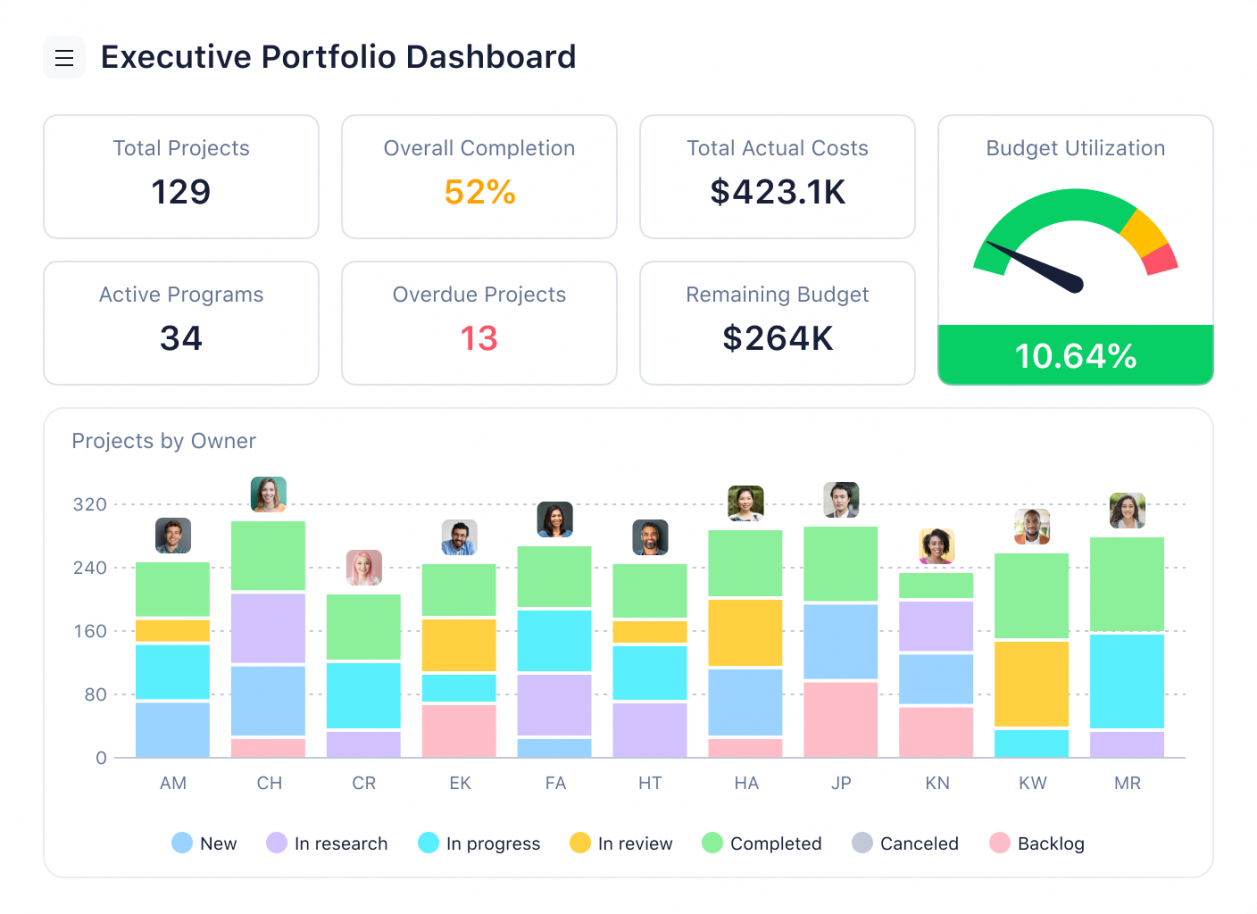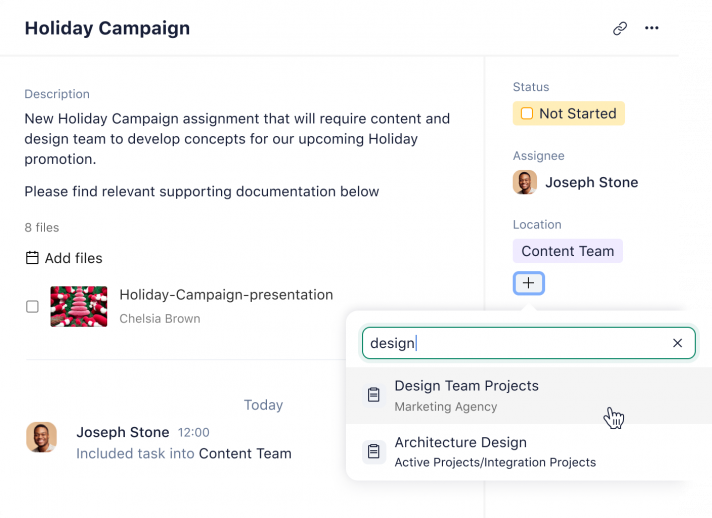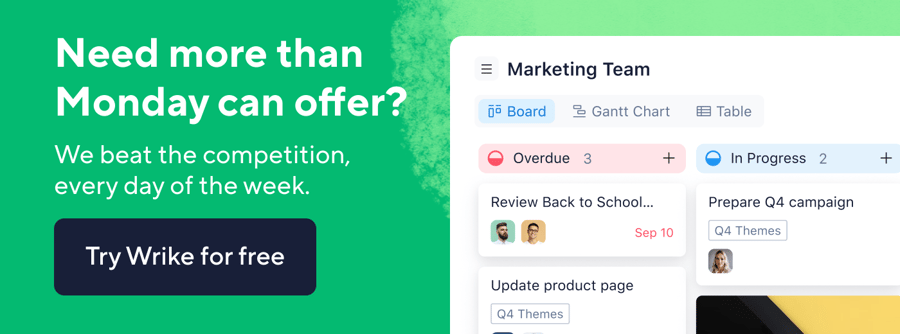Key takeaways:
- What are the key features of Monday.com? Project management tool with customizable workflows, a user-friendly interface, and task assignment capabilities, starting at $8/month per user.
- What are the limitations of Monday.com? It lacks advanced task hierarchy, has limited reporting, no approval tasks, and basic security features, making it less suitable for larger teams.
- What makes Wrike a superior alternative? Wrike offers better user experience, advanced security, increased visibility, and enhanced collaboration tools, including infinite nesting and cross-tagging.
- How does Asana compare to Monday.com? Asana provides superior approval features, more integrations, and diverse work views, though it is generally more expensive.
- Is Smartsheet a viable alternative? Yes, it features cheaper pricing, better work views, and additional item nesting capabilities compared to Monday.com.
If you’re looking for a versatile work management platform for your team, chances are you’ve come across many options. As different businesses have varying needs, there are many highly rated solutions that dominate this space.
When it comes to modern project management tools with valuable features and essential functionalities at reasonable pricing, you’ll notice Wrike or Monday.com on the shortlist. At first glance, many features may look similar between these two systems. But after some inspection, you’ll find some significant differentiators that make each platform unique.
Let’s compare Monday.com to Wrike as well as to other common Monday competitors, Asana and Smartsheet, so you can understand why Wrike is the best Monday.com alternative. Or start a free two-week trial of Wrike to jump straight in and see for yourself!
What is Monday.com?
Monday.com is a project management software that helps businesses shape and operate their workflows. It builds a core foundation for teams to organize work that can be customized by adding industry-specific products, such as applications or integrations. Monday.com also describes itself as a Work Operating System (Work OS), an open platform where teams can create solutions to ensure productivity. The cloud-based software allows teams to create custom workflows to plan, run, and track processes, projects, and everyday work.
Monday.com pros
Monday.com allows teams to manage all their work and workflows in one place from an approachable and colorful, spreadsheet-like interface. Monday.com offers some pros including:
- User-friendly, intuitive interface
- Customizable, pre-built templates
- Decent user reviews and ratings
- Free-forever option, or payment plans starting at $8/month per user
- Ability to assign tasks with due dates and timelines
- Some automated workflows and folder structures
Monday.com cons
Though Monday is a decent work management platform liked by its users, a few key areas could be improved. The biggest Monday.com cons are:
- Too simplistic to scale: Most agree that Monday.com is best suited for basic task management as opposed to enterprise project management. In Monday.com, work is confined to only three levels of hierarchy: project, task, and subtask. With no further nesting options, users are forced to diminish complex projects into only these three levels.
- Pricing gets expensive quickly: Monday.com’s basic $8/month per user plan requires a minimum of three seats, which becomes $24/month.
- Stuck in spreadsheet views: The Monday.com interface is built like a spreadsheet, which does not scale well. For example, custom fields are interpreted as columns in the Monday.com spreadsheet, so as the number of custom fields grows, the page becomes wider and often unusable to view and manage at scale.
- Limited reporting and visibility: Monday.com offers very limited reporting and analytics views. And you can only report on 50 boards at once — creating a challenge for PMOs managing multiple portfolios. Plus, the user comment section can get messy, making it difficult to focus on the work at hand with the context needed to execute.
- No approval tasks: Monday.com does not offer any approval task capabilities, making reviews and approvals a lengthy, more challenging process.
- Lack of security features. Monday.com does not offer the level of security that large-scale enterprises require. There are no locked spaces to control access or enhance security, which other apps similar to Monday can provide.
Why should you use Monday alternatives?
Monday may have a colorful design, but it also has some significant limitations in its project management capabilities. The tool sells itself as a Work OS capable of managing workforce tasks as well as collaborative projects, but its lack of features leaves busy teams that handle large-scale projects wanting something more. So if you’re looking for project management software that’s a better fit for your team than Monday.com, you can learn more about the top Monday alternatives below.
Top Monday alternatives
Now that you understand the pros and cons of Monday.com, let’s compare the tool to its competition. After much research, the best Monday.com alternatives are:
Let’s dive into the details to compare the features and capabilities of the top three alternatives to Monday.com: Wrike, Asana, and Smartsheet.
Monday vs. Wrike
In our opinion, Wrike is the best alternative to Monday.com and, with recent Wrike Lightspeed updates, Wrike decidedly beats Monday.com with:
- Better user experience
- Increased visibility
- Advanced security
- Enhanced collaboration

Better user experience
Until recently, many users considered Monday.com’s colorful user interface to be more intuitive than Wrike’s. But with Wrike’s recent UI overhaul as part of Wrike Lightspeed, users can now leverage the robust capabilities of Wrike in a more simplistic design.

Plus, Wrike allows more intuitive and infinite nesting for item types, while Monday.com only offers three levels of hierarchy. Monday.com is quite limited here, resulting in entire subprojects being dwindled to a single task or dumping all tasks from every subproject into the same location, creating chaos and clutter.
Increased visibility
Monday.com’s main view is a table view similar to a spreadsheet. But in just one click, Wrike allows users to view the exact same information in a variety of formats including:
- List
- Table
- Board
- Timeline
- Gantt chart
And because Wrike has no limit to the number of projects you can report on at once, you can get a complete 360-degree view of your team’s productivity and efficiency.

Advanced security
Working in the cloud demands the strongest layer of security. Wrike offers security protocols that are in line with global best practices. AES 256-bit encryption safeguards data in transit, while the Wrike Lock functionality gives users complete access control over their data.
Monday.com does not offer encryption as a service (EaaS) in the same way Wrike does, making Wrike the smarter choice for larger enterprises with global audiences. Wrike Lock lets you own and manage the keys to your encrypted Wrike data, giving you increased control even though your data is in the cloud.
Enhanced collaboration
Monday.com can’t match Wrike’s cross-tagging functionality. Wrike allows users to add items to multiple projects or folders, which means the same task can live in multiple places so users don’t have to navigate to different places for an update. Monday.com does offer a mirror feature that allows users to view data from a different source, but it’s limited in that users can only view a single data point rather than an entire task or project. Wrike empowers users with all the context they need in as many locations as they need it.

Collaborating with reviewers via approvals is also easier in Wrike than in Monday.com. With Wrike, users can automatically hand off work to team members with a simple status update, eliminating bottlenecks throughout review and approval processes. In Monday.com, features like automation and workload are only available at the board level, forcing users to duplicate the setup and maintenance of each board to create any type of approval standardization across the account.
Start a free two-week trial of Wrike to discover why Wrike is the top alternative to Monday.com and experience the difference yourself!
Monday vs. Asana
In second place, Asana is a decent alternative to Monday.com. But Asana has its own limitations, so let’s compare the two. Asana is an easy-to-use collaboration project management tool, which beats Monday.com with:
- Better approval features. Asana offers easy-to-use task approval features, which Monday.com does not. In Asana, Approvals are a type of task that helps users get feedback or revisions quickly. Approvers can easily see what’s needed of them and are given a clear action to take, while requesters receive clear feedback on what is or is not approved and by whom.
- Different work views. Monday.com is mostly a spreadsheet-like tool, while Asana provides a very limited spreadsheet view. On its free plan, Asana provides a wider variety of views than Monday.com — including board, Gantt chart, and calendar views.
- More integrations. Monday.com only offers 50 integrations, while Asana offers 200. A lack of integrations can result in more manual work for your teams or admins. More integrations mean more automation capabilities as well as more time saved on manual builds.
Overall, Asana offers more functionality than Monday.com. But that’s why Asana comes out as more expensive than Monday.com, which is a key con when comparing the two options. Both tools offer limited free-forever options, but Asana is cheaper than Monday.com if you choose to upgrade. At first glance, Monday.com may appear to be the more cost-effective option at $8/month per user compared to Asana’s $11/month per user. But recall that Monday.com requires a minimum of three users, making the real monthly price $24 compared to Asana’s $33.
Monday vs. Smartsheet
In third place, Smartsheet is another alternative to Monday.com. Smartsheet is a great tool for teams who rely on Excel or Google Sheets and want a spreadsheet approach to project management. Here are some key ways that Smartsheet beats Monday.com:
- Cheaper pricing. Smartsheet offers plans starting at $7/month per user for up to 10 users, for a monthly total of $70. To get 10 users on Monday.com on the first available paid plan, you’d pay $8/month per user for a monthly total of $80.
- Better work views. Monday.com and Smartsheet are both primarily spreadsheet-like tools. But on its free plan, Smartsheet provides a wider variety of views than Monday.com — including Gantt chart and calendar views.
- More item nesting. Smartsheet allows users to organize their work items or tasks into four different levels, while Monday.com can only provide three levels. This makes accurate reporting more difficult in Monday.com than in Smartsheet.
While Smartsheet’s free plan does offer more view options than Monday.com, most users consider Monday.com’s user interface to be more intuitive. Monday.com offers a more modern, fresh UI when compared to Smartsheet — which could be the deciding factor for some buyers. After all, if users don’t find the tool easy to use then they’re likely not to use it at all.
Learn why people choose Wrike over Monday today
Overall, Wrike is the best alternative to Monday.com. While Monday is a good option for teams who need to manage a small amount of work, it’s hard to stay organized or scale. If you want to streamline team management and have all of your team’s workflows and processes standardized in one place while enhancing collaboration, then Wrike is the ideal tool for you at only $10/month per user.
Monday.com’s plans are limited and rely on workarounds to make up for the lack of key features, like approvals, cross-tagging, security, and more. If you need a platform that has all the automation and work management features you need in an easy-to-use, customizable interface, Wrike is the best option out of all the Monday competitors or other apps like Monday.
Start a free trial to see how Wrike enables 360-degree project visibility, powers smart automation, and transforms strategy into results.





